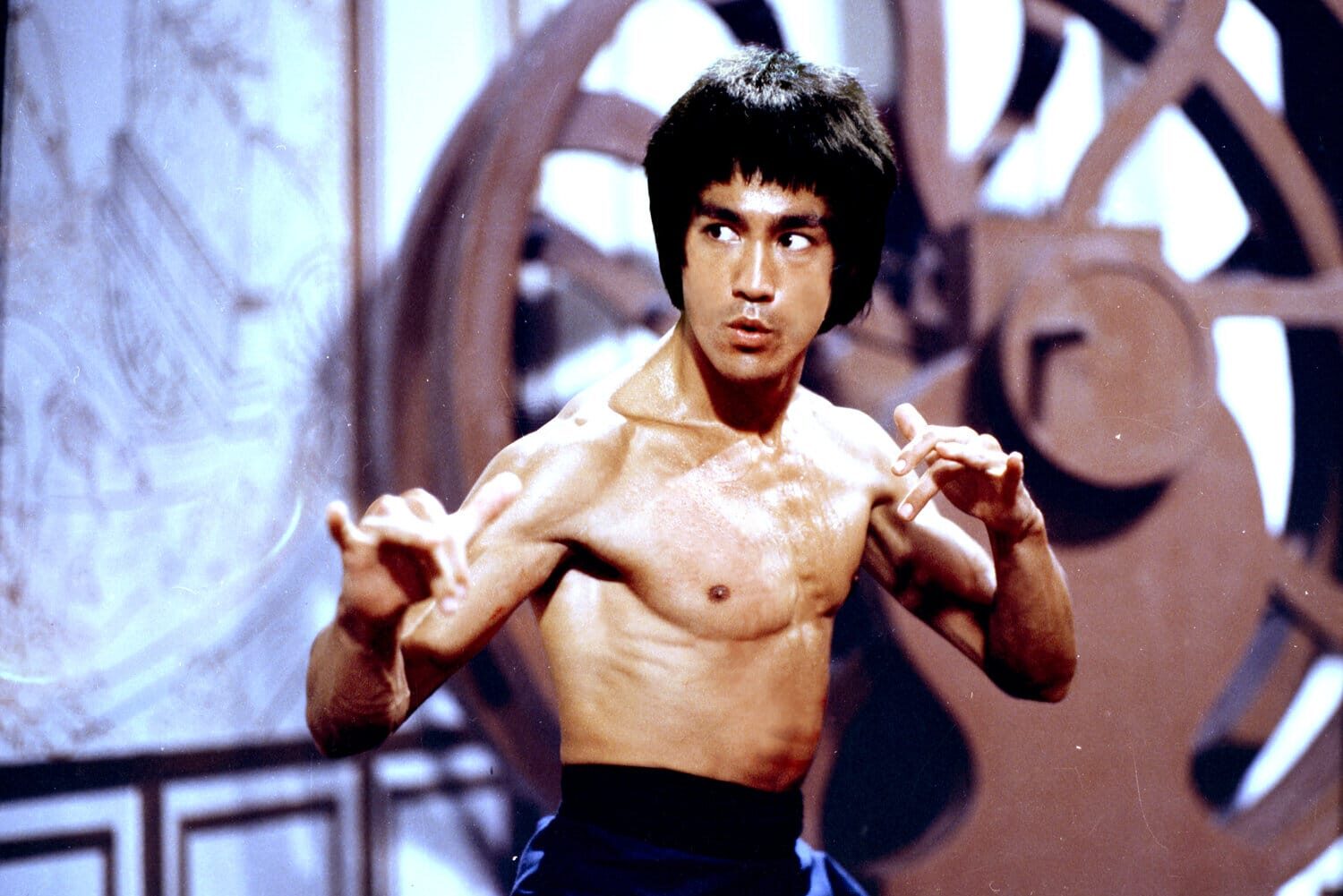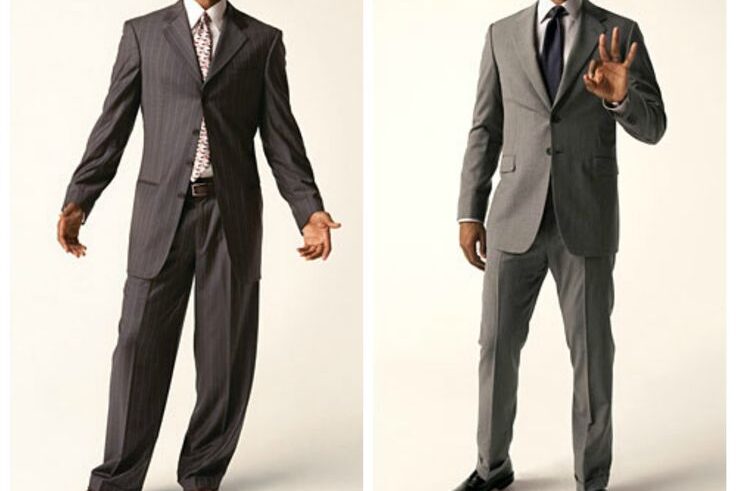How often do you wear a suit? Unless you work in the legal or financial field, few men need a closet full of suits like they did in bygone eras. But when you need one, you need one. Weddings, funerals, and various special occasions still require a suit, and at these events the modern gentleman must look the part. We’ll review the best suit colors for men and which ones to prioritize in your wardrobe.
Suit basics
Before diving into what suit colors you need, let’s hit the basics.
Even if you only own one or two suits, you should buy the best quality you can afford. There are great options for $400 or less, which is really not that bad when you think about the occasions for which you will wear this garment. They tend to be special/important events with lots of photos. The sharper you look, the more respect you show for the occasion. It’s hard to make a cheap suit look good.
As far as determining quality, the main factors to consider are fabric, construction, and fit.
Fabric
You’ll want to go with an all-wool suit for your foundational suits (you can get into some wool/linen/cotton/silk blends for secondary suits, if you so please). Most of these are pretty lightweight and will naturally regulate temperature, suitable for most conditions. Avoid any synthetic wool blends – these look cheap, don’t move well, and can overheat quickly in hot weather.
As far as thread count, 110 is sufficient. You can go higher (120, 130, 150), but these tend to cost quite a bit more.
Construction
Construction can get a little more complicated. Read here if you really want to dig in. You should try to find a suit with half-canvas or full-canvas construction, as opposed to a fused suit. This basically means that the inner lining is separate from the outer shell of the suit. This separate lining keeps the inner parts of the suit moving with you, allowing the outer part of the suit to drape naturally and flatter your frame. You also have more mobility, flexibility, and breathability with your garment.
With a fused suit, all the lining pieces are essentially glued together to the shell of the suit. This creates a stiffer garment that doesn’t look or feel as high quality. It tends to move against you and is less breathable and comfortable. They are also less durable, because the glue eventually wears off. I would avoid suits using this construction unless you absolutely cannot afford a half or full canvas suit.
As for lining, stick to fabrics which can breathe. Try to avoid polyester. Bemberg cupro is a good choice for mid-level suits. Some higher end suits will use silk.
Unlined suits are becoming more popular these days and avoid the issue above, but they do tend to look more casual and two-dimensional. This style works well for warm weather suits too. It’s your call if you want to go in this direction (there’s not really any cost savings) as a matter of personal style preference.
Fit
As far as fit, read here if you want to get really in-depth. You need to make sure the suit fits at the shoulders – your delt muscle shouldn’t be straining out through the end of the shoulder, nor should the shoulder seam extend past your shoulder joint like shoulder pads. The seam should end right where your shoulder ends. If you lean into a wall with your jacket on, your shoulder muscle and the jacket should contact the wall at the exact same time.
You can consider many other factors when finding an off-the-rack suit that fits, but the shoulders are the main feature, since these cannot be easily adjusted.
Once you determine which size fits your shoulders, take your jacket and pants to a trusted tailor to get the fit dialed in. You may need the sides taken in a bit to flatter your v-shaped frame, the sleeves shortened (you should show 1/4 to 1/2 inch of your shirt past the end of the suit sleeves), the pants shortened and/or tapered (you don’t want a bunch of fabric billowing by your shoes).
There are a lot of made to measure services online which can give you a perfect fit out of the box. Be careful with these and make sure they have a good return policy, as they don’t always get it right.
And obviously if you can afford to a fully custom-tailored suit, you should definitely go that route. Nothing looks better.

Suit Colors
Navy and/or Charcoal
Now to the actual topic of suit colors for men. Some of you will only need one suit. If you’re only going to a wedding every now and then and don’t attend many special events that necessitate a suit, one good one should be enough. You’ll always want something around in case you have to attend a funeral, have an important job interview (depending on your field of work) or get a last minute invite to a special event.
If you fall in this category, you can go with either a plain navy or a charcoal suit. You can’t go wrong with either color, as they will work for all of the above scenarios. Some think that charcoal is slightly more versatile, as it this color is more appropriate for funerals and job interviews in some fields.
A dark navy suit is fine for a funeral, just make sure it’s plain navy (not bright navy), has no visible pattern, and you wear a dark, conservative tie.
So if you only have one suit, it should be navy or charcoal, and your second suit should be the other color. If your first suit is more conservative, the second one can be a slightly lighter shade or have a subtle pattern/texture. These are the most basic suit colors for men.
Avoid any loud patterns (big pinstripes, large checks, etc…) with these two foundational suits. Stick with a jacket with medium width notch lapels. The razor-thin lapels or overly large ones tend to go in and out of style.
A few examples below show just how good these basic suit colors can look if you nail down the fit.


Medium gray
Medium gray makes a great third suit color. Gray is very versatile and is a touch more casual than you darker charcoal and navy suits. You can mix and match more shirt colors and ties, and you can go with black or brown shoes.
If you have to wear suits for your job, medium gray can be a great color to mix up the boring routine without being too flashy.
If you want to go with a pattern, you should still keep it subtle here, but there is a little more room for something fun if that fits your style. Glen or Prince of Wales check? Houndstooth? Nailhead or hopsack fabric to add some texture? These more subtle patterns or fabric variations can work for this color option.
The pictures below show how great an option medium grey can be for a third suit color.

Seasonally appropriate
Now we’re venturing beyond the basics. If you like wearing suits, your job requires you to wear them often, or you just so happen to attend many suit-worthy functions, you can start to have a little more fun at this point.
“Seasonally appropriate” is not a color, but the weather where you live (or wear your suits) should determine the colorway of your next couple of options.
Does it get hot where you live? Tan, brown, or bright blue linen, light or pale grey tropical wool, or even seersucker (can go with a navy seersucker if the traditional print is too preppy for you) are great options. Olive cotton/linen is a little bolder and can offer some killer looks.
Don’t be afraid to sport these in the Spring and Summer for some seasonal flair. You will definitely stand out in a smart, gentlemanly way, like the pictures below.

If it gets cold where you live, think of Fall or Winter fabrics and colors. Brown tweed, charcoal flannel (maybe with a subtle pinstripe), light grey flannel, or a navy tonal plaid. If you have the sauce for it, a burgundy suit will turn heads. As you can see below, you can play with rich patterns, textures, and colors for colder weather suits.

A seasonally appropriate suit or two will go a long way if you’re looking at forth, fifth, or more options for your repertoire. If you live somewhere with all four seasons and wear suits often, then you should consider warm weather and cold weather specific suits. These seasonal options can all be great suit colors for men.
Black tuxedo
If you attend black tie events with any regularity, you should purchase your own tux. A tux that you have made or tailored to your specifications will look much better than anything you rent, and will suit the event appropriately. Plus you don’t have to worry about the hassle of renting.
Make sure to stick with a classic style (black with peak lapels are your safest bet, shawl collar will work too), so it doesn’t go out of fashion. A bowtie tends to work better than a traditional black tie. Even if you don’t wear it often, you can get a lot of mileage out of a classically styled tux. See below.

If you’re considering a cream or midnight blue tux, you must attending an awful lot of these fancy affairs. Get a black one first, then venture into these bolder colors.
These are the suit colors for men that you should prioritize in your wardrobe. Most of you can get away with owning a couple of suits. Make sure they are high quality and properly fitted to your body. You may not need it often, but when you do need a suit, make sure to stay consistent with the qualities of a modern gentleman.



